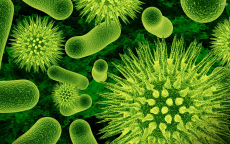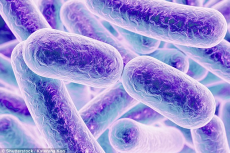

Genetics is the study of how genes are inherited, expressed and altered. A complete set of genetic information carried by an organism is what we call a genome. The genome must consist of more than one component. Bacteria are the smallest living things on this earth and can be found everywhere. Whether that be in the ocean, in the mountains, in your house, inside your body, they are everywhere. They usually live in colonies and reproduce quickly holding a short life cycle (this makes them useful when carrying out experimental investigations.) Currently, there are 10,000 known species of bacteria, but we are still far from discovering all bacteria. They feed on matter in the environment, for example human skin. Some species are pathogenic (can cause disease,) for example Mycobacterium tuberculosis cause tuberculosis (TB). Nomenclature is the naming of things. When writing a species’ name, the first word is the genus, written with a capital letter, and the second word is the species, written with all lower case letters. We also write in italics. If handwritten, rather than in italics, underline the name. There are useful types of bacteria, such as those used in industry. Lactic acid bacteria can be used to make cheese and yoghurt and bacteria such as Staphylococcus aureus is used to make penicillin.
Bacteria hold significant importance in cancer research. Soil bacteria has been used to treat cancer patients, and genetically engineered bacteria can be used to target cancer cells.
When we refer to bacterial growth, we are not describing the growth of an individual cell but rather the growth of the colony.
What is a plasmid?
A plasmid is a double stranded circular DNA molecules which replicate independently of the chromosome.
What is a bacteriophage?
A bacteriophage is a virus that infects bacteria.

To understand bacteria, we need to familiarise ourselves with some technology:
Wild type- normal species
Phenotype- all features that can be observed, for example, the feature of blue eyes.
Allele- sequence variant of a gene.
Genotype- the alleles an organism has which can be defined by the sequence of DNA.
Mutant- an organism whose genome carries a mutation with respect to the wild type.
Mutagenesis- the process by which mutants are produced.
Mutagens- agents which cause mutations.
Aerobic bacteria- bacteria that need oxygen in order to grow and survive
Anaerobic bacteria- bacteria that do not need oxygen in order to grow and survive (they thrive in conditions where no oxygen is present.)
When a wild type species of bacteria do not require nutritional factors they are called phototrophs. When the organism needs additional nutrients in order to grow, they are called auxotrophs.
What is binary fission?
Binary fission is the process of asexual reproduction and cell division (mainly utilised by prokaryotes and non-specialised/ simple eukaryotes.) During the process, the DNA molecule divides and forms two DNA molecules, which then move to opposite ends of the cell. Following this, the cell membrane divides to form two daughter cells. The end product is daughter cells identical to the original cell. The process of fission takes from around 15 minutes to 16 hours depending on which type of bacterium. Furthermore, there are factors which influence the rate at which bacterial growth occurs, such as temperature, pH and moisture.
Image Credits:
http://i.dailymail.co.uk/i/pix/2016/12/12/11/3B4D66EC00000578-4024388-image-a-9_1481541493399.jpg
http://theleadershipreview.org/wp-content/uploads/2015/01/bacteria-18929-2880x1800.jpg

0 Comment:
Be the first one to comment on this article.